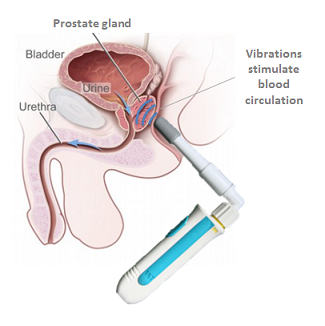Prostate Exam
 The Digital Rectal Exam is the standard prostate exam employed by doctors around the world. It’s also commonly the butt of jokes the world over, owing to how uncomfortable the subject matter tends to be among men.
The Digital Rectal Exam is the standard prostate exam employed by doctors around the world. It’s also commonly the butt of jokes the world over, owing to how uncomfortable the subject matter tends to be among men.
And let’s not beat around the bush, the first time you get a digital rectal exam, you’re going to feel awkward, and probably a little embarrassed. This is understandable, but really, there’s nothing at all to feel ashamed or embarrassed about. Within moments the whole thing will be over, at which point you can either forget about it or come to the realization that, hey, that wasn’t all that bad after all.
But just to allay your fears a little more, let’s take a slightly deeper look at this prostate exam and what exactly you can expect from it, so that when that moment comes for you to have it performed, you’ll be fully prepared.
The Prosate Exam Drill
The first step will be to strip off your clothes and strap yourself in one of those charming hospital gowns with the strips down the back. Because the prostate is located near the rectum, you’ll need to bend over so the doctor can gain easier access to it. This can be accomplished either by bending over while standing up and resting your arms on the table, or by lying down on your side and pulling your knees up to your chest.
The doctor will probably place one hand on your abdomen to help keep you steady while he performs the exam. He’ll then separate your buttocks and insert his gloved, lubricated hand into your rectum (unfortunately, it doesn’t sound great no matter how you say it, but there it is). Because you’ll likely tense up, the doctor will pause briefly at this point to allow you to relax before moving his hand further in, towards your prostate.
Once the doctor has reached his destination, he’ll begin to perform the prostate exam. He’ll have a checklist of things he’ll be looking for, starting with the size, which would tell him whether or not you have an enlarged prostate. He’ll also be feeling for lumps, which, when combined with an enlargement, could indicate the presence of prostatitis. Lastly, he’ll be trying to determine the relative firmness of the prostate gland. An overly firm prostate could mean cancer is present in the prostate.
During this process you may begin to feel faint or nauseous, and may also feel the need to urinate as your prostate is being touched. These are all natural reactions, and nothing to feel embarrassed about. Within a minute or two, the whole ordeal will be over, and the doctor should have a very good idea concerning the general state of your prostate.
Some additional tips you can put into practice while getting a prostate exam:
![]() You may feel like you want to hold your breath, but refrain from doing so. Continue to breathe in a normal fashion, or at a slightly reduced pace to control your stress.
You may feel like you want to hold your breath, but refrain from doing so. Continue to breathe in a normal fashion, or at a slightly reduced pace to control your stress.
![]() Try to visualize being in another place, or focus your mind on something else. Think about something that makes you happy, like your kids, a favourite hobby, or a place where you feel the most in peace.
Try to visualize being in another place, or focus your mind on something else. Think about something that makes you happy, like your kids, a favourite hobby, or a place where you feel the most in peace.
![]() If you’re feeling any pain, or getting lightheaded at all, don’t be afraid to let the doctor know. The presence of pain in particular could signal an existing condition.
If you’re feeling any pain, or getting lightheaded at all, don’t be afraid to let the doctor know. The presence of pain in particular could signal an existing condition.
Self Prostate Exam
If the thought of having a doctor examine your prostate is too much to bear, or in the event you simply feel comfortable examining it yourself, a self examination is entirely viable. It’s actually quite easy for a man to reach his own prostate gland. You’ll want to focus on the size and texture of the gland to determine if anything seems to be amiss. The prostate gland should be mostly smooth and slightly firm to the touch, with the size being slightly larger than a walnut.




